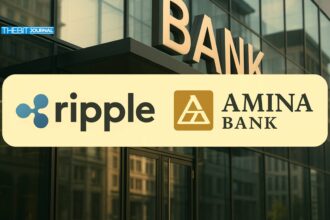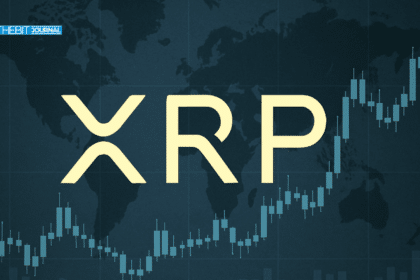The decentralized finance (DeFi) sector has roared back into dominance, registering $19.1 billion in open borrows in Q4 2024, nearly double the $11 billion posted by centralized platforms. Recent reports by Galaxy Digital read a 959% surge in DeFi lending since the sector’s lows in late 2022, a sweeping return of capital to trustless, permissionless lending systems.
The report noted that while Tether, Galaxy, and Ledn continued to dominate centralized lending with a combined $9.9 billion in loan books, DeFi’s rapidly expanding footprint has shifted the overall balance of power in the crypto credit ecosystem. Open borrows across DeFi protocols now account for the lion’s share of the $30 billion global crypto lending market, $36.5 billion when including collateralized debt position (CDP) stablecoins.
From Collapse to Comeback: DeFi Lending’s 959% Growth Story
DeFi lending has undergone a huge recovery from its $1.8 billion bottom in late 2022, brought about by a mix of protocol resilience, technical innovation, and investor appetite for trust-minimized infrastructure. Spanning 20 decentralized lending applications across 12 blockchain networks, the $19.1 billion in open loans represents a re-emergence of confidence in peer-to-peer lending via smart contracts.
Protocols like Aave, Compound, and newer cross-chain players have played a central role in this growth by enabling users to borrow and lend assets without intermediaries. These systems offer real-time transparency, dynamic interest rates, and automated liquidations, traits that have gained renewed importance following the collapse of major CeFi lenders in 2022 and 2023, such as Celsius and BlockFi.

According to the Galaxy report, DeFi’s modular architecture, along with its ability to integrate with both Layer-1 and Layer-2 networks, has allowed protocols to scale rapidly while adapting to evolving liquidity and risk dynamics.
CeFi: Institutional-Grade, But Constrained
While CeFi still plays a critical role, especially among institutional clients, its total lending activity remains substantially lower than DeFi’s. Based on available data, the $11 billion in outstanding CeFi loans is largely composed of over-the-counter (OTC) arrangements, prime brokerage services, and on-chain private credit.
Tether, Galaxy, and Ledn collectively make up 88.6% of CeFi’s loan activity, yet the report cautions against double-counting in some cases. Certain centralized lenders issue CDP-backed stablecoins using crypto collateral, which are then re-lent to off-chain borrowers. This mechanism artificially inflates the perceived market size and obscures the true risk exposure across different platforms.
The contraction of CeFi activity, down 43% from its $64.4 billion peak in Q4 2021, has been attributed to diminished borrower demand, tighter liquidity, and heightened counterparty risk, all of which intensified after last cycle’s insolvencies.
Galaxy: DeFi May Shape Lending Standards Going Forward
The Galaxy report concludes that while Tether and other CeFi entities remain integral to institutional credit pipelines, the future of crypto lending will likely be shaped by decentralized models.
DeFi TVL also reflects this upward trend, reaching $214 billion by Q4 2024, more than doubling from the year prior. This capital expansion has not only revived lending but also strengthened DeFi’s role in liquid staking, perpetual, and real-world asset bridges.

As regulatory clarity advances in key jurisdictions and institutions seek compliant on-chain exposure, DeFi’s value proposition is evolving from retail speculation to foundational financial infrastructure.
Conclusion
The resurgence of DeFi lending is a major inflection point in the evolution of crypto finance, with $19.1 billion in open loans and a 959% growth rate since 2022. While centralized entities continue to serve tailored needs for large borrowers, the market is clearly recalibrating toward transparent, automated, and resilient systems. If current trends persist, DeFi lending growth may redefine the trajectory of the broader digital credit ecosystem in the years to come.
Follow us on Twitter and LinkedIn, and join our Telegram channel.
FAQs
What is DeFi lending and how does it work?
DeFi lending allows users to lend or borrow crypto assets directly through smart contracts, eliminating intermediaries and enabling real-time, permissionless financial activity on blockchain networks.
Why has DeFi lending grown so rapidly in 2024?
DeFi lending has surged due to increased demand for transparent, trustless systems, integration with Layer-2 scaling, and the growth of cross-chain liquidity solutions. Institutional interest in tokenized real-world assets has also played a role.
How does CeFi lending differ from DeFi lending?
CeFi relies on centralized entities that manage custody and credit risk, typically for institutions. DeFi, by contrast, is governed by code, offering users direct control over funds and lower systemic risk.
What are the risks associated with DeFi lending?
Risks include smart contract bugs, market volatility, over-collateralization requirements, and regulatory uncertainty. However, these are often balanced by increased transparency and control.
What is the outlook for DeFi lending in 2025 and beyond?
If adoption continues at its current pace, DeFi lending may surpass historical CeFi levels, especially as institutions seek decentralized rails for credit, real-world assets, and yield generation.
Glossary
DeFi (Decentralized Finance): Blockchain-based financial services that operate without traditional intermediaries like banks or brokers.
CeFi (Centralized Finance): Financial systems that rely on centralized institutions to manage assets, loans, and credit exposure.
CDP (Collateralized Debt Position): A form of on-chain loan backed by collateralized crypto, often used in minting stablecoins.
TVL (Total Value Locked): The total value of crypto assets deposited in a DeFi protocol, used as a measure of network adoption and utility.
RWAs (Real-World Assets): Physical or traditional financial assets (e.g., real estate, treasury bills) represented on-chain via tokenization.





























